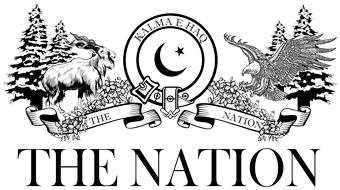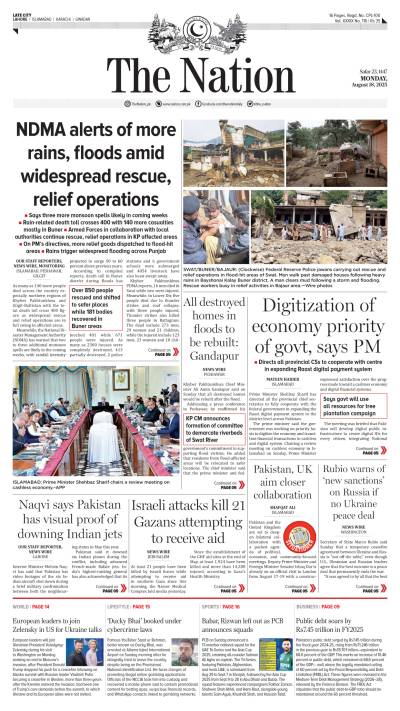Anchorage, Alaska, is not the first place one thinks of when imagining global diplomacy. Yet, on a brisk day in Macomb, Michigan, Americans and the world were reminded that great power politics often thrives in unexpected places. There, US President Donald Trump and Russian President Vladimir Putin met in a summit that carried the heavy burden of Europe’s bloodiest conflict since the Second World War—the Russia-Ukraine war.
The meeting was historic for a simple reason: no American president since Russia’s full-scale invasion of Ukraine in 2022 had sat face to face with Putin. Symbolism abounded. Putin, flown in from Moscow, was greeted on a red carpet at Joint Base Elmendorf-Richardson, even as American military aircraft roared overhead in a display of US strength. The optics were designed to signal parity, strength, and the faint possibility of reconciliation. But diplomacy, as history reminds us, rarely lives on optics alone.
Trump’s motives were unmistakable. He has long sought to craft a narrative that his presidency is defined not by domestic discord but by global statesmanship. He often reminds audiences that he prevented “six major wars”, citing instances from South Asia to the Middle East. He boasts of brokering an Armenia-Azerbaijan ceasefire and of calming India-Pakistan tensions. Each claim reinforces his self-image as the indispensable dealmaker, one who sees a Nobel Peace Prize not as a fantasy but as a logical coronation of his efforts. If he could halt the war in Ukraine, the world, in Trump’s mind, would finally acknowledge what he has long believed: he is history’s reluctant peacemaker.
Yet, after three hours of discussion, no concrete breakthrough was achieved. Trump admitted as much: “There’s no deal until there’s a deal.” That admission could either be the pragmatism of a negotiator unwilling to overpromise or the evasion of a man who knows the gaps remain enormous. Putin described the meeting as a “reference point” for pragmatic relations, but offered nothing tangible. Ukrainian President Volodymyr Zelenskyy, notably absent from the talks, remains adamant: Ukraine will not concede land, nor will it accept a settlement that legitimises Russia’s territorial conquests.
This is where Trump’s gamble reveals itself. He insists he is not “negotiating for Ukraine” but trying to “get them at a table”. In practice, however, that posture recalls historical precedents where external powers dictated peace terms without involving the parties most directly affected. One need only recall the 1938 Munich Agreement, where Britain and France negotiated with Hitler over Czechoslovakia—without Prague’s presence—to grasp the dangers of sidelining smaller states in the name of “great power peace”. Munich did not prevent war; it paved the way for one. Trump’s direct engagement with Putin without Kyiv or Europe risks repeating the pattern of peace pursued over the heads of those most endangered.
European leaders, understandably, were unsettled. Czech Foreign Minister Jan Lipavský noted with scepticism that Russian attacks on Ukraine continued even during the Alaska meeting. Europe’s fear is that Trump, in search of a quick diplomatic “win”, will pressure Ukraine into concessions that compromise its sovereignty and reward Russian aggression. In their view, a “peace” achieved by freezing the conflict, while Russia entrenches itself in occupied territory, would be worse than no peace at all.
And yet, dismissing the summit outright would be shortsighted. History offers counterexamples to Munich—moments when adversaries, against all odds, chose dialogue that eventually bore fruit. Ronald Reagan and Mikhail Gorbachev’s Reykjavik summit in 1986 nearly collapsed but laid the groundwork for the Intermediate-Range Nuclear Forces Treaty and a thaw in Cold War tensions. The US and Soviet Union, despite deep mistrust, eventually found common ground through persistence. Could Alaska be the modern equivalent of Reykjavik: a meeting that appears inconclusive in the moment but sets in motion a longer process?
The question, then, is not whether the Alaska summit delivered peace—it plainly did not—but whether it opened space for a different kind of diplomacy. Trump’s willingness to treat Putin as a peer, while distasteful to many in Europe, at least acknowledges an uncomfortable truth: wars are rarely ended by humiliating adversaries. They end when both sides believe they have something to gain by stopping. For Putin, whose forces are bogged down in a grinding war, diplomacy offers time and legitimacy. For Trump, it offers the possibility of glory. Whether Ukraine and Europe can be persuaded to see value in such talks remains uncertain.
Trump’s own track record complicates the picture. While he touts his conflict-prevention credentials, his foreign policy legacy is mixed. His approach to the Gaza conflict has drawn international outrage, with critics accusing him of enabling Israeli Prime Minister Benjamin Netanyahu’s relentless military campaign. Gaza has become a symbol of humanitarian catastrophe—thousands dead, civilians trapped in what many call an “open-air prison”. If Trump truly seeks Nobel-worthy recognition, critics argue, he could start by leveraging US influence to halt the Gaza bloodshed.
Still, it would be a mistake to dismiss Trump’s instinct for engagement. His critics often forget that diplomacy is not conducted with friends but with adversaries. Reagan engaged Gorbachev. Nixon engaged Mao. Even Franklin Roosevelt allied with Stalin to defeat Hitler. Respect, however grudging, is often the precondition of peace. Trump and Putin’s mutual acknowledgement of one another—even when derided as naïveté—may be less about capitulation than about testing whether trust, however minimal, can be built.
Yet, caution is warranted. Without Ukraine’s active participation, any US-Russia “understanding” risks being stillborn. Ceasefires imposed from above, without addressing core disputes, often collapse. The 1953 Korean Armistice created a frozen conflict that persists seven decades later. More recently, ceasefire deals in Syria produced momentary lulls but no durable resolution. Ukraine’s insistence on sovereignty is not just rhetoric; it is rooted in hard lessons of history. Nations consigned to the bargaining table without their consent rarely find the peace durable.
The Alaska summit must therefore be judged not by its immediate output but by whether it creates conditions for inclusive negotiations. If it becomes a prelude to trilateral talks involving Kyiv, it may earn a place alongside Reykjavik as a cautious turning point. If it becomes a deal struck over Ukraine’s head, it will likely be remembered alongside Munich.
For now, the war rages on. Ukrainian drones hit Russian cities as air raid sirens wailed across eastern Ukraine during the summit itself. Moscow continues to press forward, undeterred by symbolic gestures. And Zelenskyy, bolstered by European scepticism, refuses to cede ground.
Trump’s Alaska initiative may yet prove either prescient or premature. If he can transform it into a framework that brings Ukraine, Russia, Europe, and the United States together, history may judge him as more than a showman. If not, the Alaska summit will join the long list of diplomatic mirages—grand in theatre, empty in substance.
The stakes could not be higher. What hangs in the balance is not only Ukraine’s fate but the credibility of diplomacy itself. In an age when wars seem increasingly immune to negotiation, the world still yearns for proof that dialogue—serious, inclusive, and principled—remains possible.
M A Hossain
The writer is a political and defense analyst based in Bangladesh. He can be reached at writetomahossain@gmail.com







